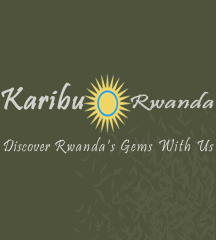Tourist Information
Tourist Guides
Uganda Cultural Aspects

Listing Details
Description
Situated at the geographical heart of the African continent, Uganda has long been a cultural melting pot, as evidenced by the 30-plus different indigenous languages belonging to five distinct linguistic groups, and an equally diverse cultural mosaic of music, art and handicrafts. The country’s most ancient inhabitants, confined to the hilly southwest, are the Batwa and Bambuti Pygmies, relics of the hunter-gatherer cultures that once occupied much of East Africa to leave behind a rich legacy of rock paintings, such as those at the Nyero Rock Shelter near Kumi.At the cultural core of modern-day Uganda lie the Bantu-speaking kingdoms of Buganda, Bunyoro, Ankole and Toro, whose traditional monarchs – reinstated in the 1990s after having been abolished by President Milton Obote in 1967 – still serve as important cultural figureheads. According to oral tradition, these centuries-old kingdoms are offshoots of the mediaeval kingdoms of Batembuzi and Bacwezi, which lay in the vicinity of present-day Mubende and Ntusi, where archaeological evidence suggests that a strongly centralised polity had emerged by the 11th century. Three former kings of Buganda are buried in an impressive traditional thatched building at the Kasubi Tombs in Kampala.
Elsewhere, Uganda’s cultural diversity is boosted in the northeast by the presence of the Karimojong, traditional pastoralists whose lifestyle and culture is reminiscent of the renowned Maasai, and in the northwest by a patchwork of agricultural peoples whose Nilotic languages and cultures are rooted in what is now Sudan. The Rwenzori foothills are home to the hardy Bakonjo, whose hunting shrines are dedicated to a one-legged, one-armed, one-eyed pipe-smoking spirit known as Kalisa, while the Bagisu of the Mount Elgon region are known for their colourful Imbalu ceremony, an individual initiation of young boys to manhood that peaks in activity in and around August of every even numbered year.
source:www.visituganda.com
Reviews (0)
Quick Links
About
Contact Info
Address:
Uganda: Katasi Road, Plot 203, Block 200, Namulanda, Entebbe Road, Kampala UG
UK: 87 Caernarvon Close, Mitcham, Surrey, CR4 1XE, UNITED KINGDOM.
Phone:
+256.772-370-111, +44.790.863.9450
Email:
karibu@kariburwanda.com




